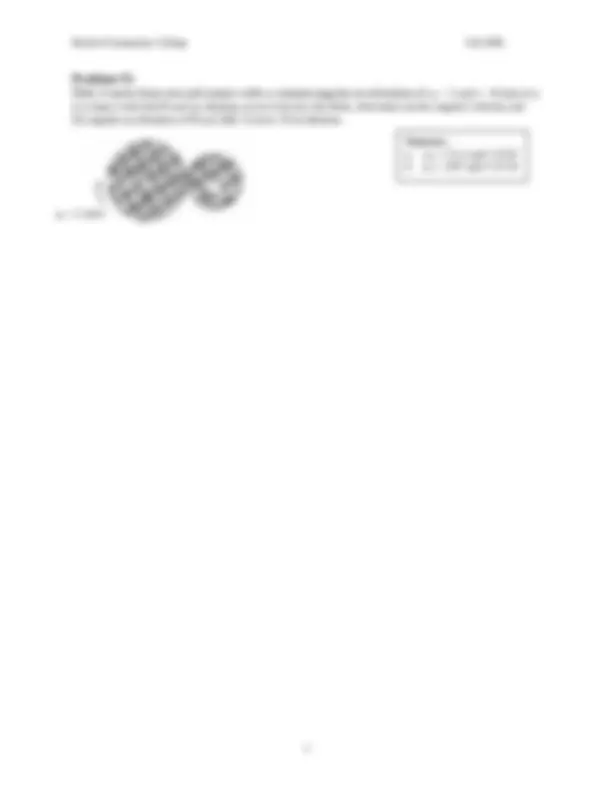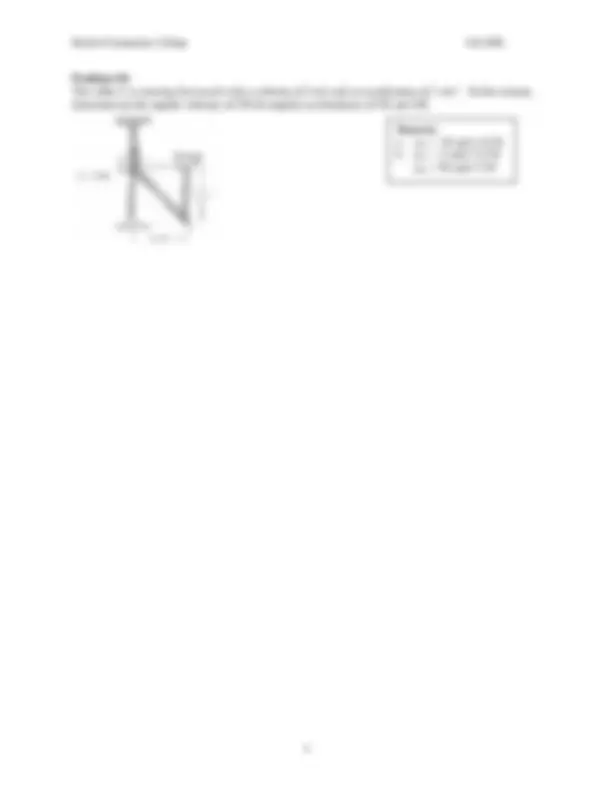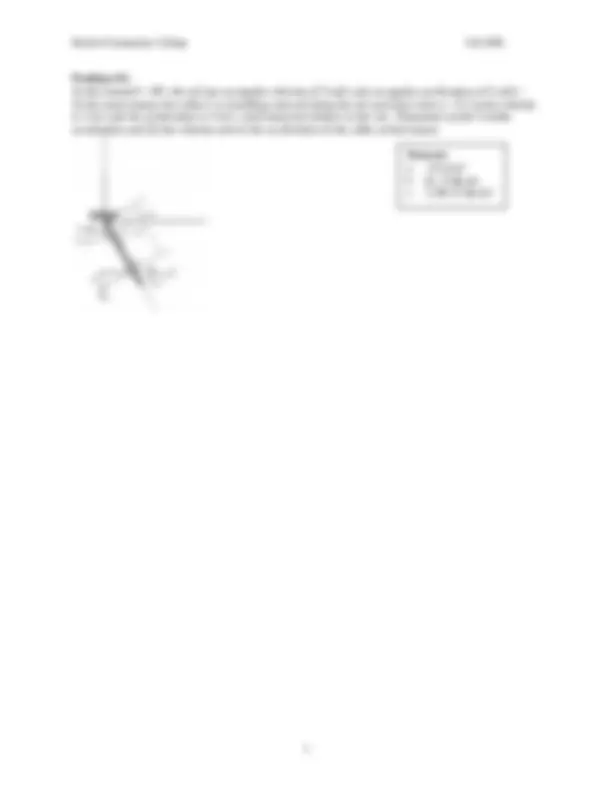





Study with the several resources on Docsity

Earn points by helping other students or get them with a premium plan


Prepare for your exams
Study with the several resources on Docsity

Earn points to download
Earn points by helping other students or get them with a premium plan
Community
Ask the community for help and clear up your study doubts
Discover the best universities in your country according to Docsity users
Free resources
Download our free guides on studying techniques, anxiety management strategies, and thesis advice from Docsity tutors
Solutions to problem 1 to problem 5 from the fall 2006 engineering dynamics practice exam at harford community college. The problems involve calculating normal forces, recoil velocities, angular velocities, and angular accelerations.
Typology: Exams
1 / 5

This page cannot be seen from the preview
Don't miss anything!




A boy and his bicycle have a total weight of 125 lb and a center of mass at G. If he is coasting (i.e. not pedaling) with a speed of 10 ft/s at the top of the hill A, determine the normal force exerted on both wheels of the bicycle when he arrives at B, where the radius of curvature of the road is ρ = 50 ft. Neglect friction. Answer : 283 lb
The 1200 lb cannon fires an 8-lb projectile with a muzzle velocity of 1500 ft/s. If firing takes place in 0.03 seconds, determine (a) the recoil velocity of the cannon just after firing, and (b) the average impulsive force acting on the projectile. (Note: the cannon support is fixed to the ground and the horizontal recoil of the cannon is absorbed by the two springs.) Answers : a. 10 ft/s ← b. 12.4 kip
Problem #4: The collar C is moving downward with a velocity of 2 m/s and an acceleration of 1 m/s^2. At this instant, determine (a) the angular velocity of CB (b) angular accelerations of CB and AB. Answers : a. ωCB = 10 rad/s CCW b. αCB = 5 rad/s^2 CCW αAB = 95 rad/s^2 CW
Problem #5: At the instant θ = 60o, the rod has an angular velocity of 3 rad/s and an angular acceleration of 2 rad/s^2. At the same instant, the collar C is travelling outward along the rod such that when x = 0.2 m the velocity is 2 m/s and the acceleration is 3 m/s^2 , both measured relative to the rod. Determine (a) the Coriolis acceleration and (b) the velocity and (c) the acceleration of the collar at that instant. Answers : a. -12 j m/s^2 b. 2 i – 0.6 j m/s c. 1.20 i -12.4 j m/s^2